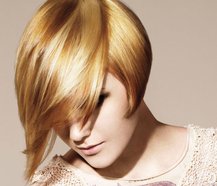 There is no classic acne case. Those who suffer from acne are all of different ages, different backgrounds and different lifestyles. What they share is their frustration with the condition of their skin. They all want to know why this is happening to them.
There is no classic acne case. Those who suffer from acne are all of different ages, different backgrounds and different lifestyles. What they share is their frustration with the condition of their skin. They all want to know why this is happening to them.
Let's start at the beginning.
There are three major organs in the human body that are responsible for the elimination of waste and toxins: the liver, the kidneys and the skin. We take for granted that the skin is an organ involved in the excretory process. Many of us treat our skin like we might a vinyl floor, scrubbing, overcleaning, overdrying and applying harsh chemicals to it. Not only is this type of treatment unnecessary, but it can cause longterm harm to the skin, and will probably not improve the situation much.
If the liver and the kidneys are overwhelmed by the number of substances to be cleared and eliminated from the system, the skin takes over. The liver will clear caffeine, hormones, allergens or sources of sensitivities, chemicals, including food additives and coloring agents, as well as a host of other substances to which you are exposed on a daily basis. It is no small wonder why many of our livers are crying out for a little support.
The skin, in an effort to back up the liver and the kidneys in the removal of unnecessary substances from the body, will become overwhelmed and affected by the amount of waste that is forced out through its pores. This process disrupts the skin's integrity and affects its appearance.
Sometimes the appropriate topical treatments are enough to help the skin cope with the overload. By keeping pores open, by absorbing excess oil and keeping the proliferation of bacteria in check, the correct product may work to clear the skin.
However, if the problem is more extreme, or of a deeper underlying nature, more may be required.
Serious medications such as accutane have serious side effects. They correct the problem, at a cost. In some respect this type of medical treatment simply kills the symptom (the acne) without addressing the underlying cause. In some cases, acne recurs, albeit in time.
If your objective is the preservation of longterm and comprehensive health as well as beauty, the key is to lighten the load on your other excretory organs, and watch the skin begin to clear. This sounds easy, but is in fact no small task.
Hormones
Anyone who survived adolescence knows that hormones begin to rage during the teenage years. This is usually the time when acne makes its first appearance. Later in life, we may experience it again with hormonal changes, including premenstrual and perimenopausal episodes.
While any hormonal excess can promote acne, the male hormones (which are present in both males and females, only in differing amounts) are particularly notorious for stimulating the cells in the hair follicle to produce more keratin (a hard protein that forms hair, skin and nails). Additionally, male hormones such as testosterone cause the oil glands to enlarge and produce more oil. This traffic jam of substances trying to escape the pore can cause a blockage.
The blockage of the hair canal can in turn promote the overgrowth of bacteria, which will promote inflammation. This is the redness that you see when a pimple becomes infected. Not all pimples, however, become infected.
If the bacterium grows out of control, the hair canal can rupture. If it does so on the surface of the skin, the result is a pustule. If it does so more deeply into the skin, the result may be a cyst, which requires a doctor’s intervention to successfully treat. Cysts can result in significant damage and possibly scar formation, so it is well worth the doctor’s visit.
Interestingly, blood levels of testosterone are not always indicative of a hormonal overload. The problem appears to lie in the skin’s ability to metabolize the hormone. Acne patients show a greater activity of an enzyme called 5-alpha reductase, which converts testosterone into a more potent form, dihydrotestosterone (DHT). The conversion into DHT seems to be the more direct cause of the acne, and is also the primary cause of unwanted facial hair in women.
MINERALS CAN HELP
Certain minerals such as Zinc and Sulfur are fabulous skin healers and builders. Make sure your diet is rich in fresh produce to ensure proper mineral content, and supplement with a high quality multi-vitamin that will guarantee you a dose daily. Extra zinc in supplement form does wonders for many people suffering from this type of acne.
Some herbs, such as saw palmetto and pygeum, have been found to curb the conversion of testosterone into DHT. This can be especially helpful for stubborn acne cases where DHT is a factor. In some cases, Saw Palmetto has had the welcome side effect of minimizing unwanted facial hair in women.
SUGAR
If you love chocolate half as much as I do, you despise the notion of sugar having anything to do with acne breakouts.
This is a fairly contraversial subject, and most researchers agree that the connection between sugar and acne is at best indirect, and certainly not universal (phew!).
However, the skin cells of acne patients have in many cases demonstrated the inability to metabolize sugar correctly . Insulin is a hormone secreted by the pancreas that promotes the uptake of sugar by the body cells. In many acne patients, there seems to be an impaired uptake of blood sugar by the skin cells, due to insensitivity to insulin. Some researchers believe this is a factor contributing to acne breakouts.
Sugar is not the only culprit. Refined carbohydrates, such as white bread, white pasta and white rice, are converted quickly into sugar in the system. At the very least, this bogs down the system by requiring much effort on the part of the pancreas. Further, many researchers believe this reduces immunity considerably. Reduced immunity becomes a factor in acne, because acne involves infection. You want to keep your immunity strong to fight off acne infections, so I suggest you seriously reduce or eliminate all refined carbs, sugary foods included.
STRESS
Few of us can claim to be unaffected by stress. Stress comes in many forms, among them psychological, physical and environmental.
The body secretes anti-inflammatory hormones in response to stress and trauma. If, however, you are operating under long-term stressful or traumatic conditions, these hormones can cause side effects, including the hormonal toxicity that can result in acne.
Try to take some time for yourself every day to unwind and relax. Meditation, a hot bath, soft music, candles and recreational reading can all help relax tightly strung nerves.
 WEAPONS YOU CAN USE TO FIGHT ACNE:
WEAPONS YOU CAN USE TO FIGHT ACNE:
1. Stressing out over stressful situations never helps matters, so focus on getting past it and don't let the situation frazzle your nerves.
2.Calcium and Magnesium do more than strengthen bones, they help to soothe the nerves and reduce sugar cravings. Make sure you supplement with these essential nutrients, as part of your high qualtiy multi-vitamin and mineral formula, although extra calcium will probably be needed, since calcium is too bulky to be sufficiently contained in a multi.
3.Vitamin C and a good Bioflavonoid complex will help to strengthen connective tissue, which includes, among other things, the lower skin layers (the dermis). These nutrients also act as natural anti-inflammatory agents.
4. Detoxification is a fail-safe method of cleansing the body of internal build-up and overloads of ALL kinds, and works really well for acne sufferers.
By detoxification, I am speaking of an internal cleansing diet that should be carried out under the guidance of a licensed professional. When the cleansing period is over, the tissues of your body will have eliminated a good deal of stored toxins that you have been carrying around most likely for many years, and the result is vibrant energy, increased metabolism and clearer skin.
5. Exercise accelerates circulation, which in turn speed up the excretion of waste. Try 20-30 minutes of activity every day, at least.
6.Drink water and plenty of it. The purest forms are purifed via a process known as reverse osmosis, or distilled. I am not a fan of Spring water. Call me a skeptic, but I sincerely question whether there is a single "pure spring" left on the planet.
7.Eat as much fresh foods as possible. Basically, buy food that is in a state as close as nature provided it as possible. That means fewer boxed, jarred, canned and bagged foods, and more fresh fruits and veggies. If you were a child and you were coloring a picture of your diet, would it be a rainbow of vibrant colors, or a pasty, pale range of tans, browns and whites? The more colors, the more phyto (or plant) nutrients, and these will keep the intestines clean and build greater vitality.
8.Milk Thistle is an herb that is venerated for it's powerful ability to purify the liver. I have personally seen several people overcome serious skin disorders like eczema with milk thistle and flax seed oil alone. However, not all milk thistles are created equal. Teas are largely ineffective, and many capsules are not properly absorbed by the body. A high quality liquid extract is your best bet.
9.If your diet is lacking in Fiber, then take Fiber Supplements. Of course, it is far better to eat plenty of fruits and salads, because in addition to fiber these foods contain a wide variety of nutrients. However, when your diet has been less than ideal, these can help. They not only speed up the elimination of food in the digestive tract, but they may help bind toxins as they go. Constipation fosters the development of acne, and can worsen an already existing condition.
10. Last, but definitely not least, increase the essential fatty acids in your diet, Specifically the Omega-3's.
11. Look for certain product ingredients that will help boost your skin's capacity to deal with the excess oil secretions. Fruit acid gels are excellent for exfoliating the skin and keeping pores unclogged. Use them regularly.
Reference: http://healthyskinshop.com/acinper.html
 Kasia Good Day Sunshine Sunscreen rated TOP SUNSCREEN on EWG!
Kasia Good Day Sunshine Sunscreen rated TOP SUNSCREEN on EWG!




